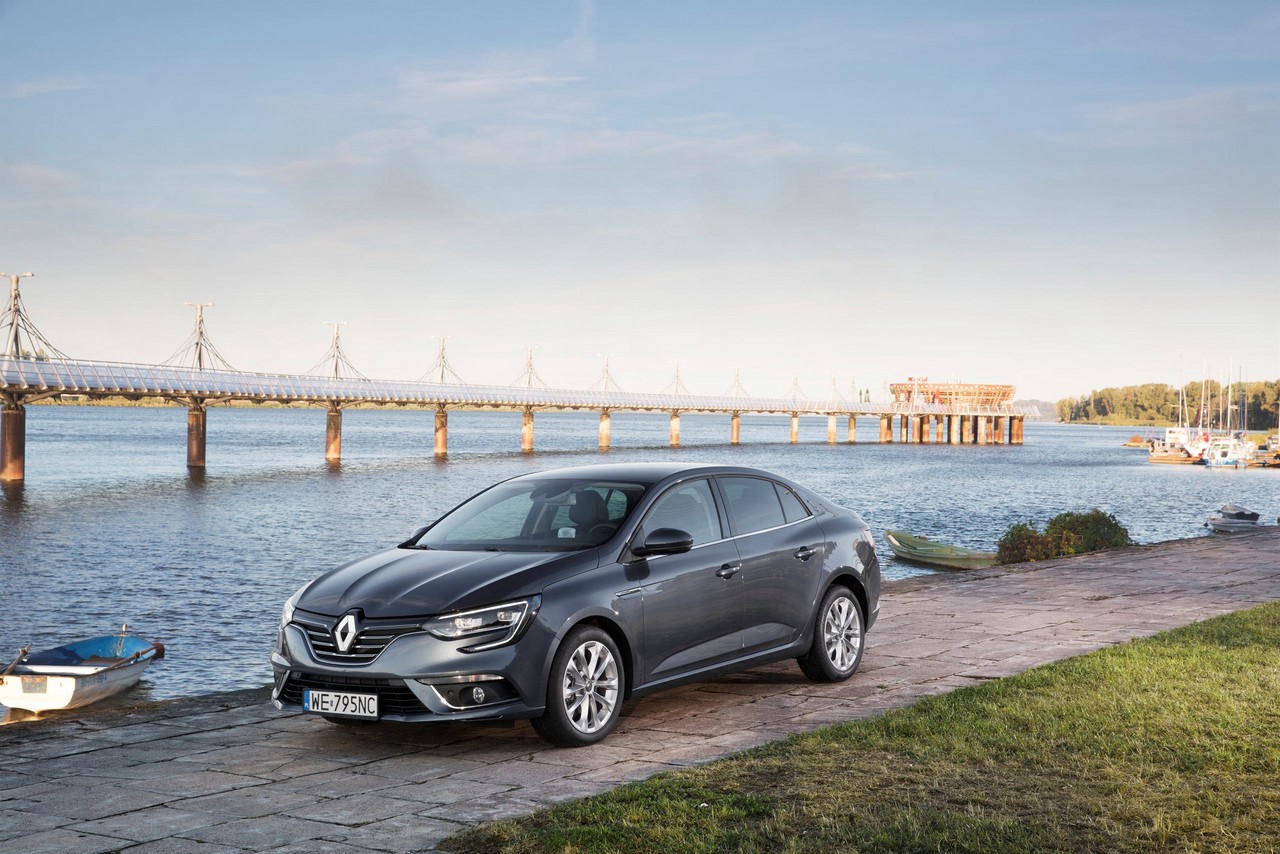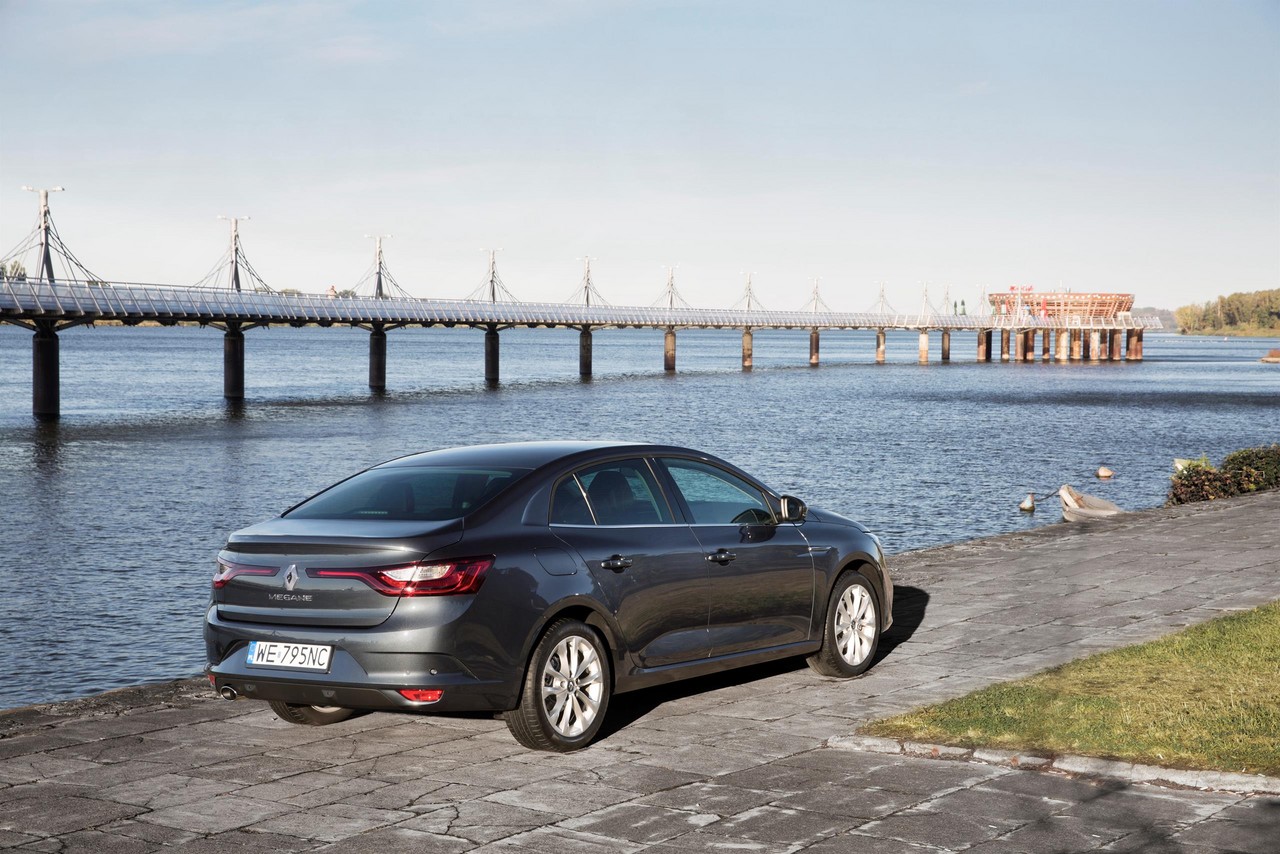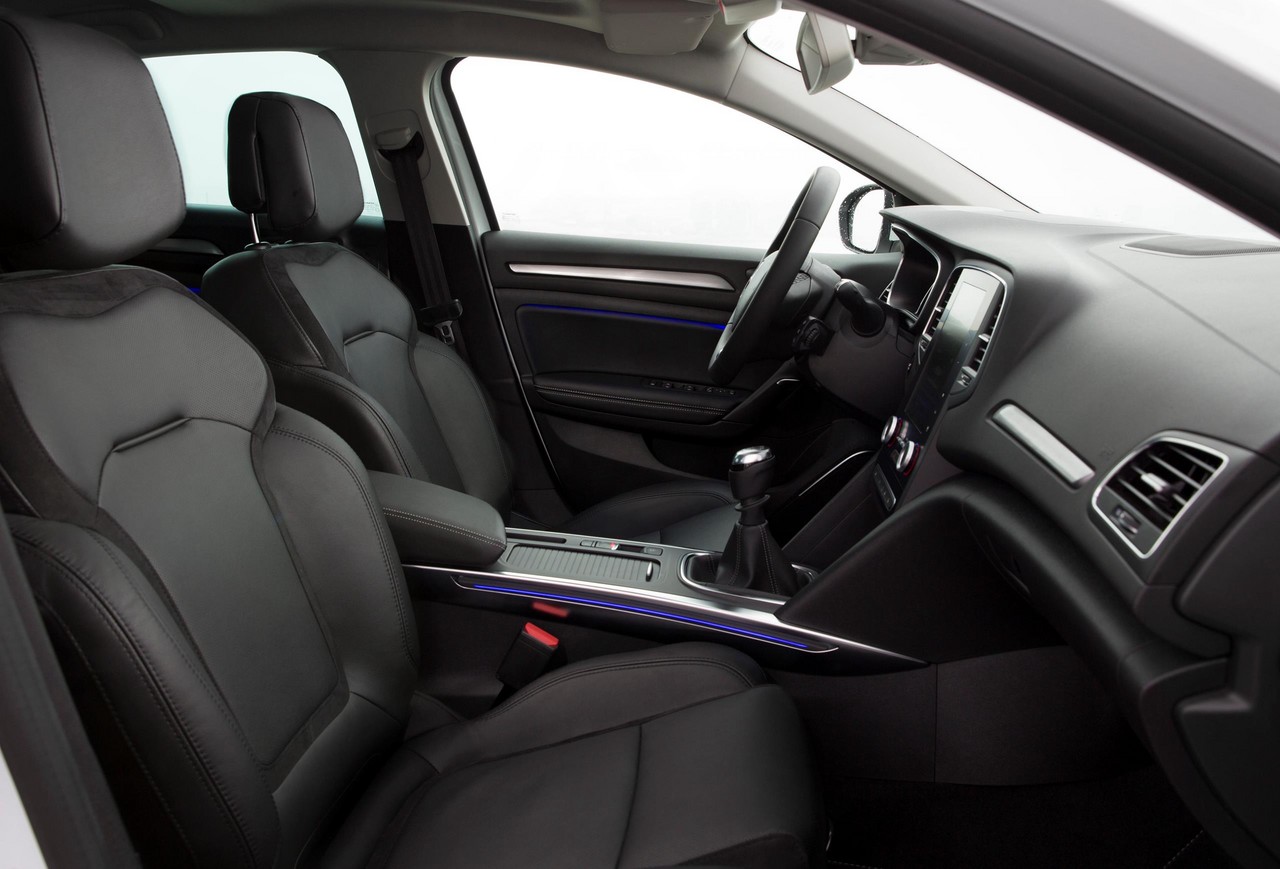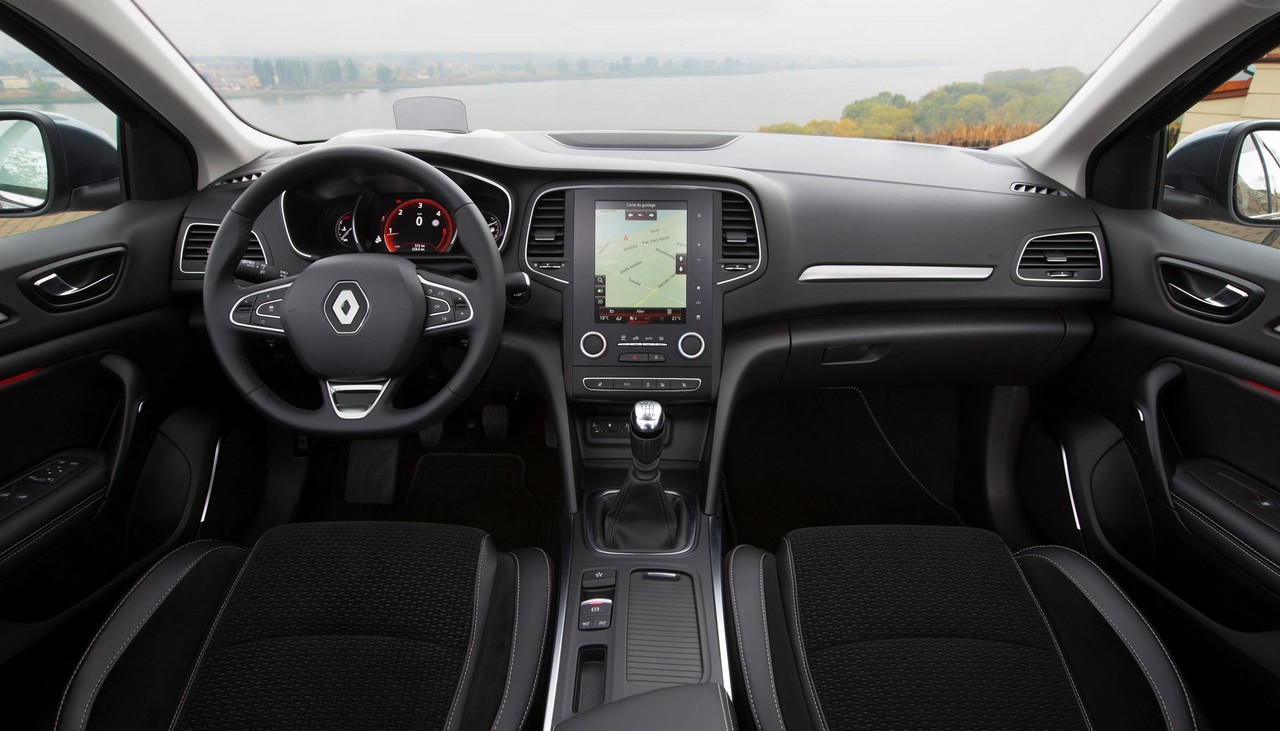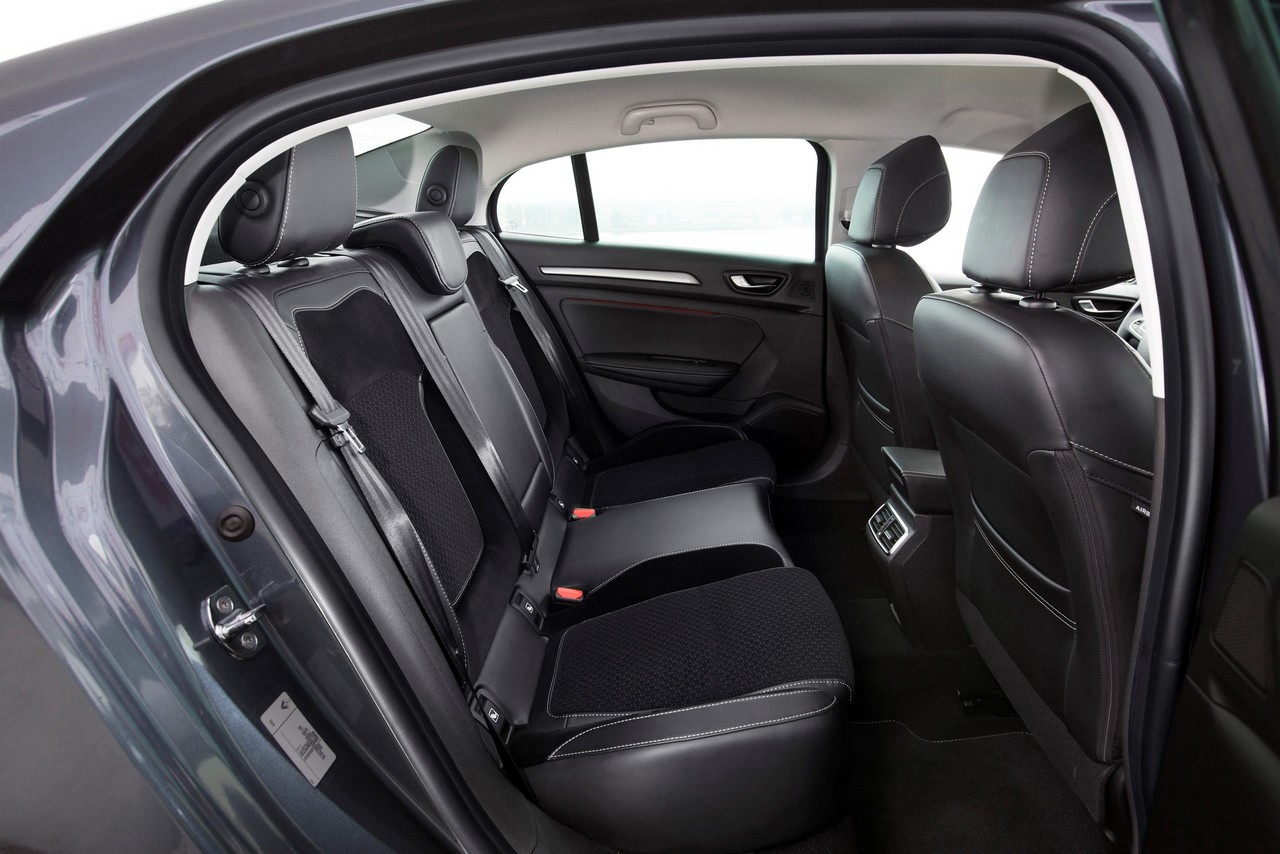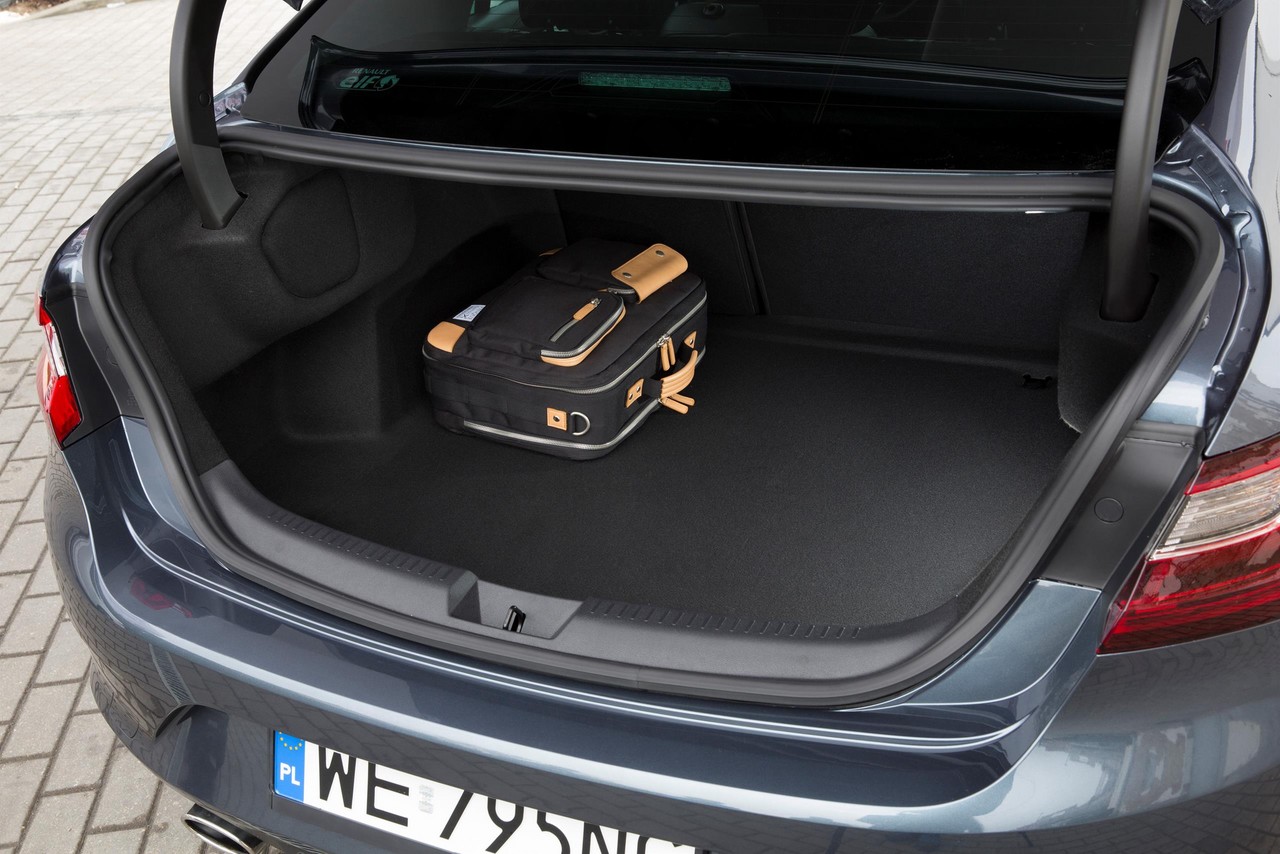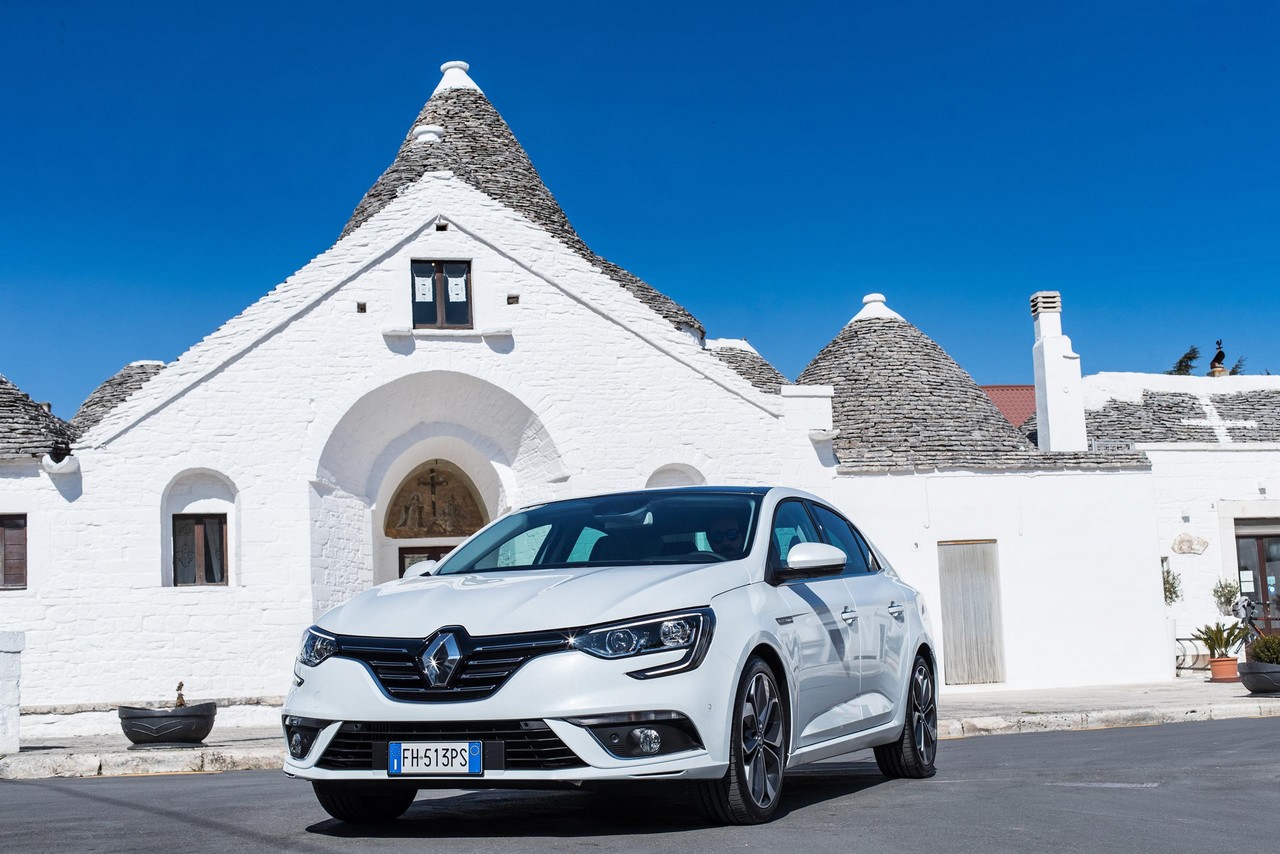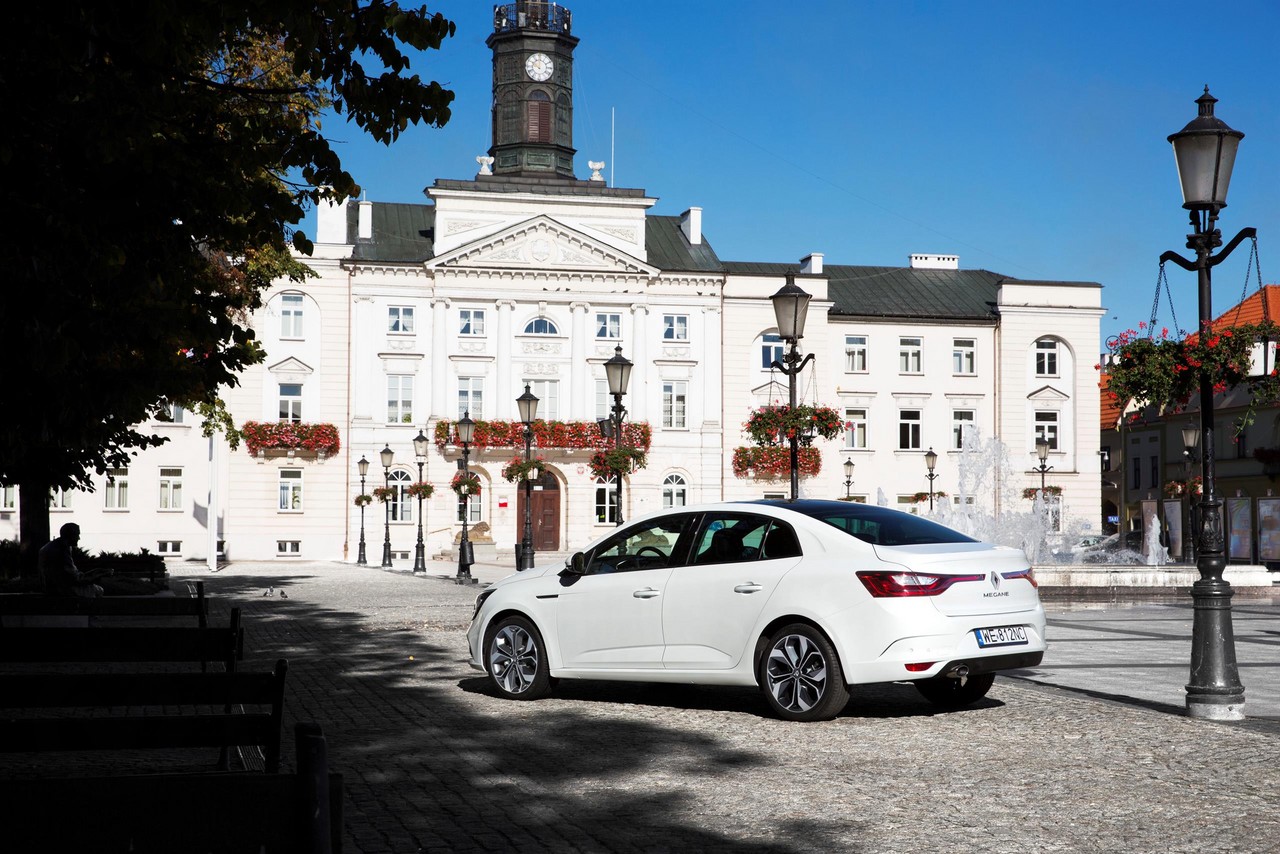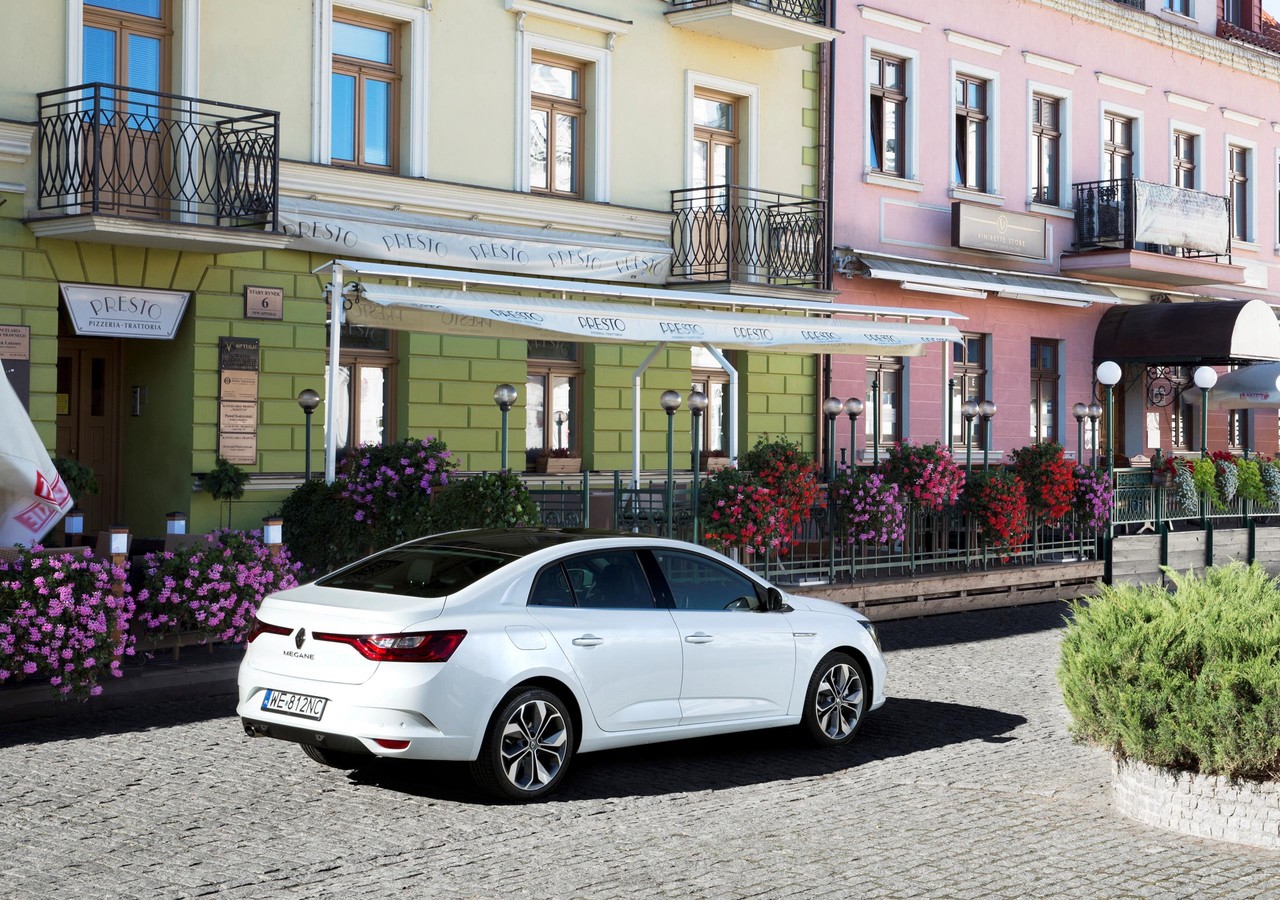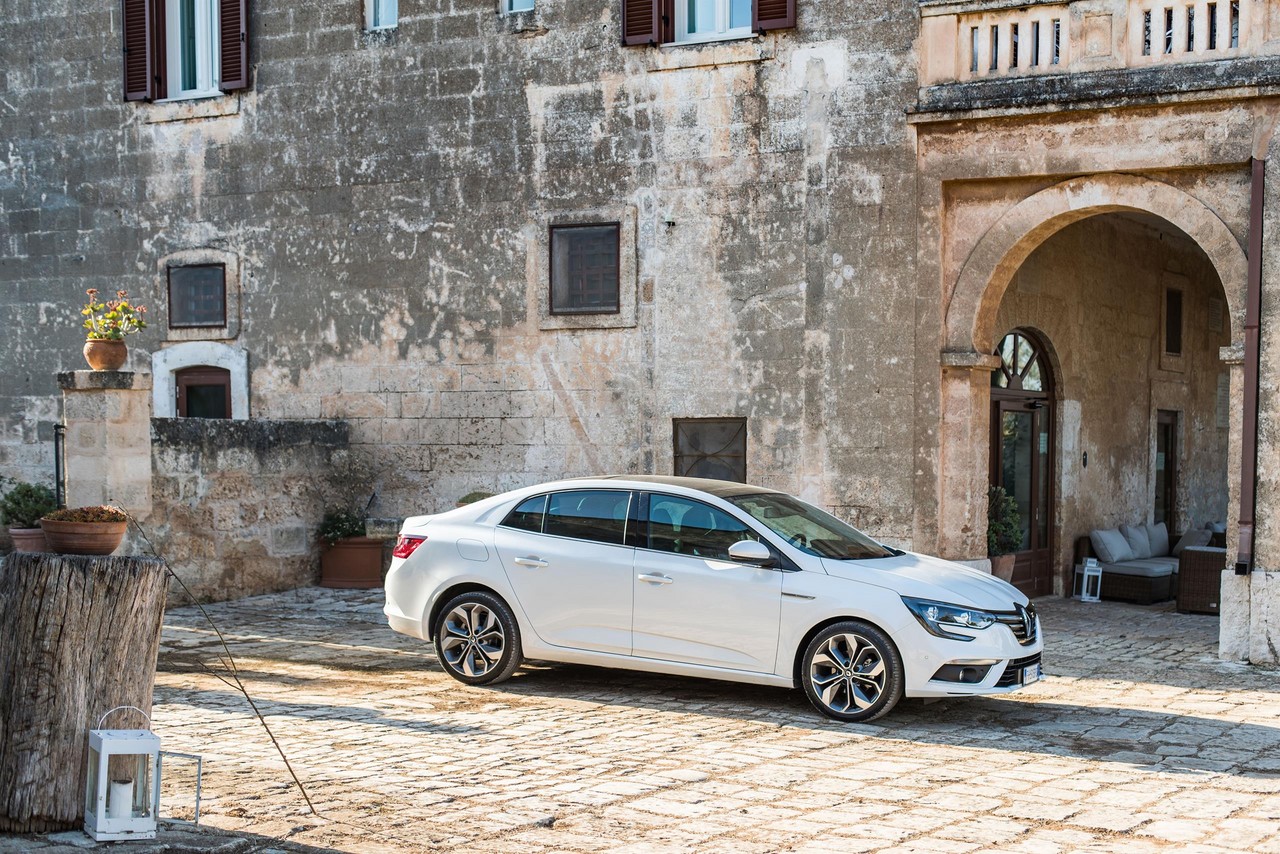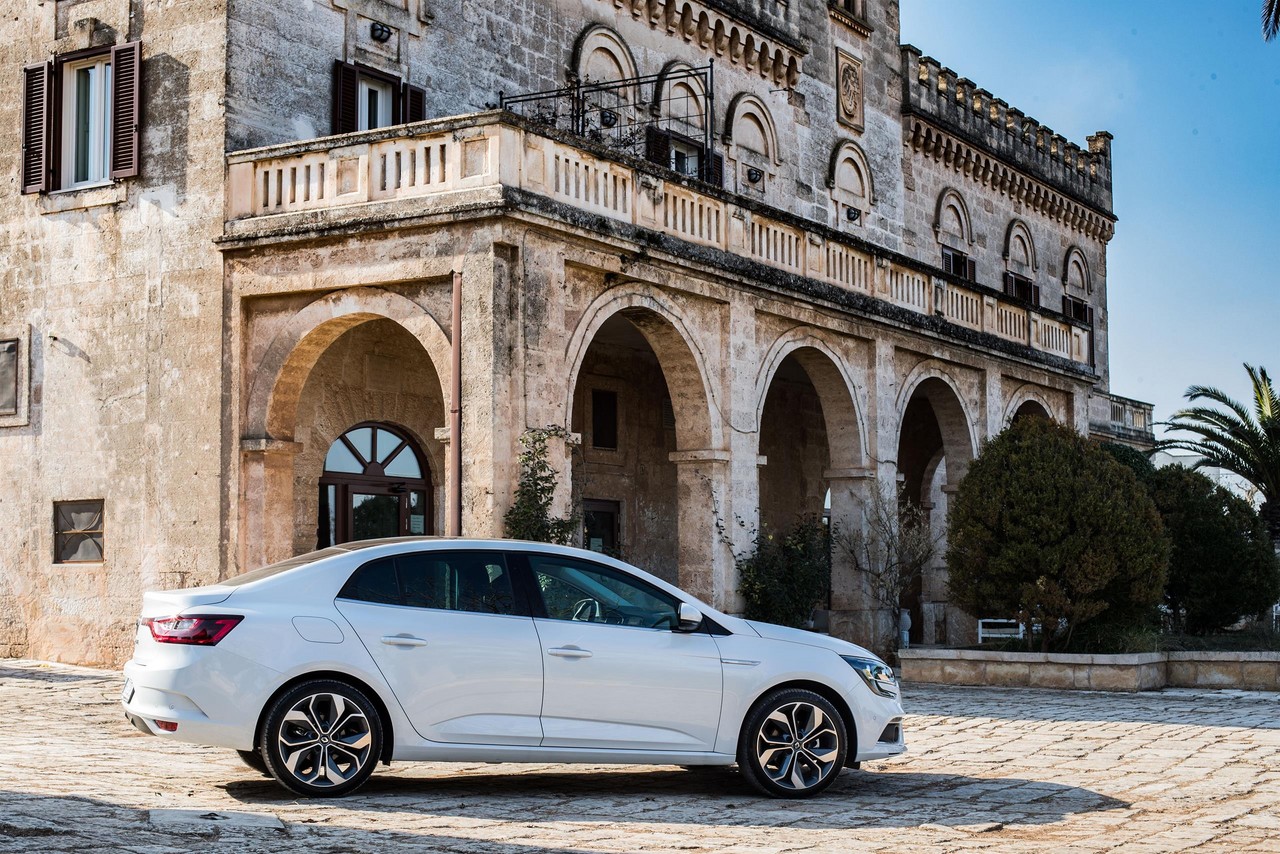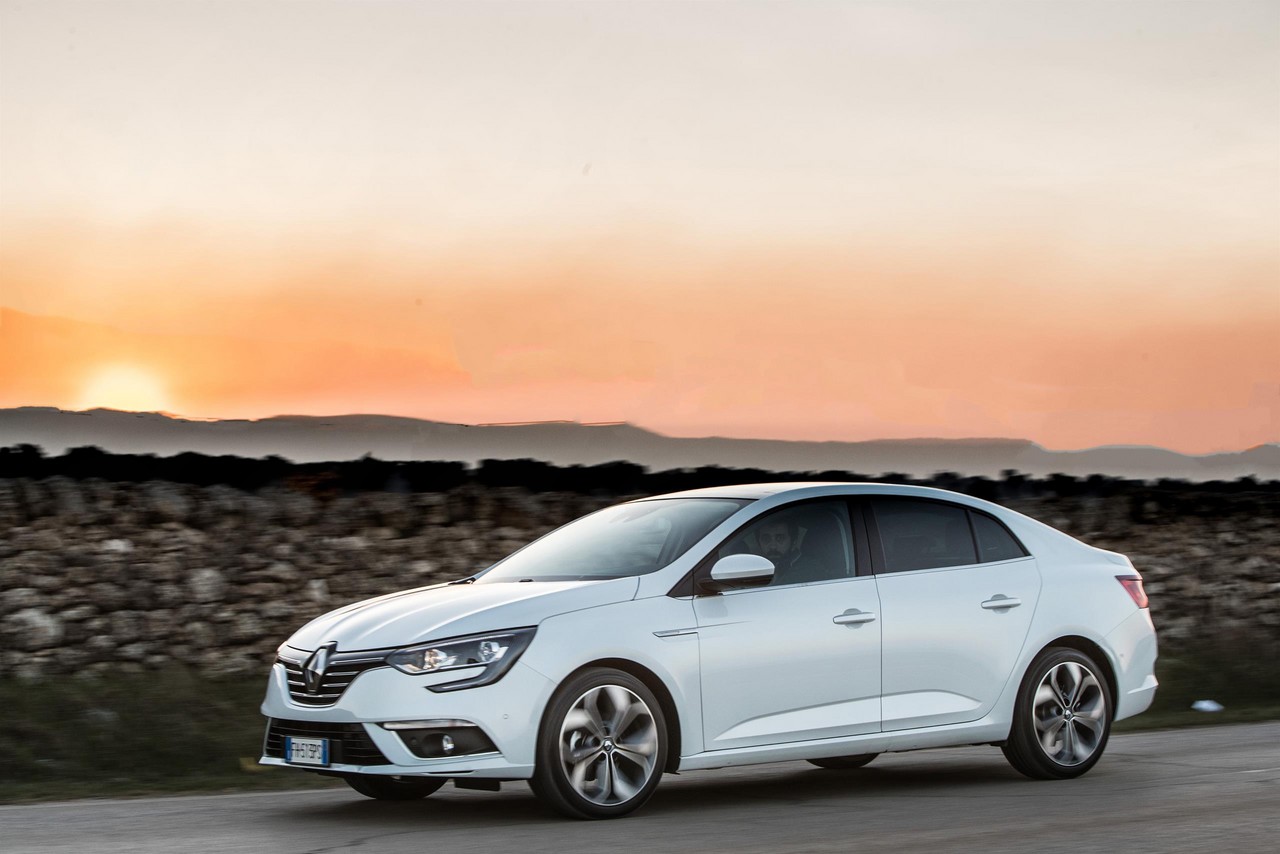
- Comfortable ride
- Economical 1.2-litre H5Ft turbo petrol engine
- Light steering makes low-speed manoeuvres easy…
- … but lacks weight and feel at higher speeds
- Limited dynamic ability
Overview
The Renault LFF Megane sedan was released in Australia in June 2017; please note that the BFB Megane hatch and KFB Megane Wagon have been reviewed separately. Manufactured in Bursa, Turkey, the front-wheel drive Renault LFF Megane was powered by a 1.2-litre turbo petrol engine that was mated to a seven-speed double clutch transmission (Renault’s ‘EDC7’). Furthermore, the Megane sedan range consisted of Zens and Intens editions.
Megane Sedan Energy TCe 130: H5Ft engine
For the Megane Energy TCe 130, the 1.2-litre H5Ft engine had an aluminium block and cylinder head, a low-intertia turbocharger, double overhead camshaft (chain-driven), four valves per cylinder, double-cam phasing variable valve timing (i.e. variable intake and exhaust valve timing) and a compression ratio of 9.5:1. For models with manual transmissions, the H5Ft engine also had a ‘Stop&Start’ function which enabled the alternator to recover kinetic energy produced under deceleration. For Australia, however, a manual transmission was not available.
The HF5t engine required premium unleaded petrol (95 RON or 98 RON).
| Variant | Edition | Engine | Trans. | Peak power | Peak torque |
|---|---|---|---|---|---|
| Energy TCe 130 | Zen, Intens |
1.2-litre H5Ft turbo petrol I4 | 7sp DCT | 97 kW at 5500 rpm | 205 Nm at 2000 rpm |
Dimensions
Compared to the Renault X38 Fluence which it effectively replaced, the Renault LFF Megane sedan was 12 mm longer (at 4630 mm), 5 mm wider (1814 mm), 44 mm lower (1434 mm) and had a 9 mm longer wheelbase (2711 mm). Furthermore, the Renault Megane sedan had a boot capacity of 503 litres and an unladen weight of 1321 kg.
Suspension and steering
The Renault LFF Megane sedan had MacPherson strut front suspension and a torsion beam rear axle. Furthermore, the Renault Megane sedan had rack-and-pinion steering with electric power assistance; the steering wheel required 2.9 turns from lock to lock, while the turning circle was 11.2 metres.
Safety equipment
Standard safety equipment for the Renault Megane sedan included dual front airbags, front side airbags, full-length curtain airbags, ABS, electronic brake force distribution, brake assist, electronic stability control, traction control and front seatbelts with pre-tensioners and load limiters.
As a $700 extra-cost option, the Renault Megane Zen could be specified with an Advanced Driver Assist System (ADAS) which included:
- Advanced Emergency Braking System (AEBS, Inter-urban): operating at speeds between 30 km/h and 140 km/h, AEBS warned the driver if there was a risk of collision with the vehicle ahead. If the driver failed to respond or did not react sufficiently, the brakes would be applied automatically to avoid or reduce the severity of a collision; and,
- Lane Departure Warning (LDW): operating at speeds above 70 km/h, LDW would alert the driver if the vehicle crossed a solid or broken white line without previously indicating.
The Renault Megane Intens was fitted with ADAS as standard as well as:
- Safe Distance Warning (DW): operating at speeds between 30 km/h and 200 km/h, a warning pictogram which corresponds to the time interval separating the Megane from the vehicle ahead is displayed on the dashboard or the head-up display;
- Adaptive Cruise Control (ACC): operating at speeds between 50 km/h and 140 km/h, ACC uses a front radar sensor to measure the distance to the vehicle ahead and automatically adjusts vehicle speed to maintain a pre-selected distance; and,
- Blind Spot Warning (BSW): operating at speeds between 30 km/h and 140 km/h, BSW could warn the driver of the presence of another vehicle in the driver’s blind spot via a visual signal in the door mirrors.
Brakes
The Renault LFF Megane sedan had 280 mm by 24 mm ventilated front brake discs and 260 mm by 8 mm solid rear discs.
Euro NCAP testing
In Euro NCAP testing , the related Renault XFB Megane hatch received a five star safety rating which included an 88 per cent adult occupant protection rating and an 87 per cent child occupant protection rating. In the frontal offset test, occupant protection was generally rated as good, though lower leg protection for the front passenger and lower right leg protection for the driver were rated as adequate (i.e. a slight risk of serious injury). Maximum points were awarded in the side impact test; in the more severe pole test, however, chest protection was rated as adequate.
Features: Renault Megane Zen
Standard features for the Renault Megane Zen included 6.5J x 16-inch ‘Silverline’ alloy wheels with 205/55 R16 tyres, Renault’s ‘R-Link 2’ multimedia system with a seven-inch touchscreen (landscape orientation) and navigation, an Arkamys sound system with eight speakers, auxiliary 3.5 mm and dual USB inputs, Bluetooth mobile phone connectivity with audio streaming, ‘dark carbon’ cloth upholstery, dual-zone climate control air conditioning, cruise control with speed limiter, front and rear fog lights, front and rear parking sensors, a rear view camera, dusk-sensing headlights, rain-sensing wipers, 60:40 split folding rear seats, a leather-wrapped steering wheel, remote central locking with Renault’s ‘Smart Key Card’, power adjustable door mirrors with demisting function, power windows, a height and reach adjustable steering column, height adjustable front seats, push-button start, 12 volt power sockets (front and rear), tyre pressure monitor, a trip computer and an immobiliser.
Features: Renault Megane Intens
Compared to the Renault Megane Zen, the Megane Intens was further equipped with 7.5J x 18-inch ‘Grand Tour’ alloy wheels with 225/40 R18 tyres, an 8.7-inch touchscreen (portrait orientation), ‘dark carbon’ leather upholstery, Renault’s ‘Pure Vision’ LED headlights, side parking sensors, a Nappa leather steering wheel, power folding door mirrors, an auto-dimming rear view mirror, a rear armrest with cupholders, in-cabin LED courtesy lights, chrome front door sill plates, rear privacy glass and a power-operated panoramic sunroof.
Finally, the Renault Megane Intens also featured:
- Renault’s ‘Multi-Sense’ which enabled the driver to select from Comfort, Eco, Sport, Neutral and Personalised driving settings which adjusted accelerator pedal response, gearshift behaviour, steering assistance and engine noise; and,
- Renault’s ‘Easy Park Assist’ which could measure parking spaces (whether parallel, perpendicular or angled) and provide automated steering for the parking manoeuvre while the driver controlled vehicle speed. Easy Park Assist could also assist when exiting from parallel parking spots.
Brochure and specifications
